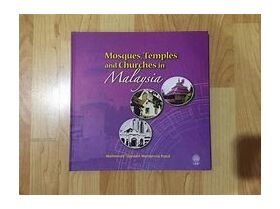The presence of heritage mosques, temples and churches is a testimony to the harmonious relationship that has existed between the various cultures of the Malay, Indian, Chinese and others in Malaysia. The values of humanity and civilization of the great religions such as Islam, Buddhism, Christianity and Hinduism can be found in the design and architectural languages of these structures. The strength of a people does not depend only on their ability to perform many acts but also on their ability to appreciate the differences between cultures and adapt them to strengthen wills and create new visions. Malaysia is rich because of its diversity and the heritage monuments of all religions, and her people can have much benefit in understanding each culture's ways to communicate with God and with each other.
He is a senior lecturer at the Department of Architecture, Faculty of Built Environment at the Universiti Teknologi Malaysia. He Bachelors of Architectural Studies and Master of Architecture at the University of Wisconsin, Milwaukee in 1984 and 1986. In 1996 he was conferred a Doctorate in Architecture from the University of Edinburgh, Scotland. He specializes in theory and history of architecture with emphasis on the ideas of Islamic Architecture from the perspectives of the Prophet Muhammad's Sunnah (traditions) and the framework of early western modernist thoughts. He has published many books and articles on the subject of mosque designs and community curriculum and has given many lectures to religious leaders, academics and general public. He has written many books (40 published books), articles and popular pieces to educate the Malaysian public. Dr. M. Tajuddin has written and given many interviews to local television nerworks RTMI and TV3, newspapers such as Utusan Malaysia, The Star, New Straits Times and Sin Chiew Jit Poh. He was a columnist for 'Architecture Inside Out' for the mainstream newspaper, The Star for 4 years
No reviews found

